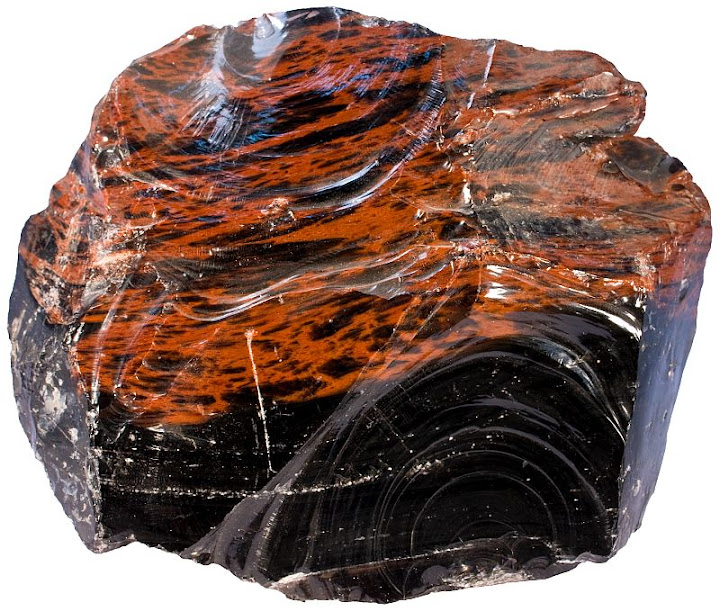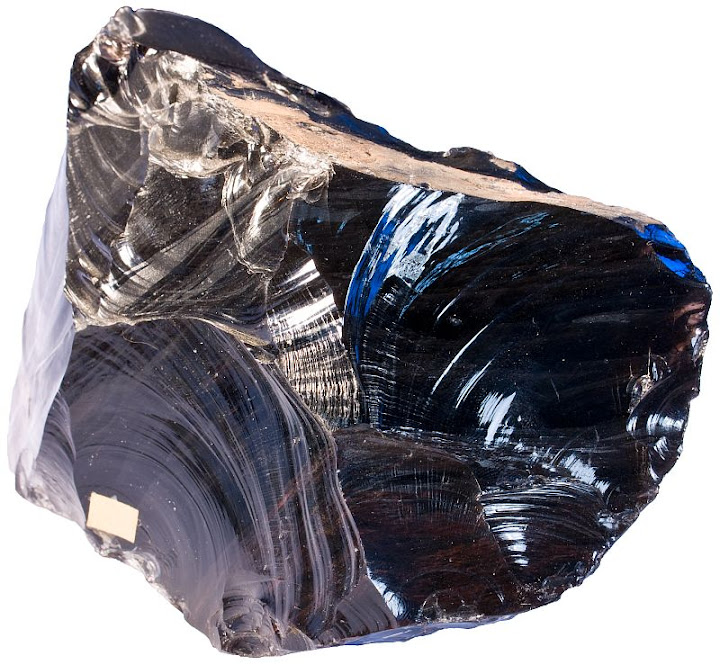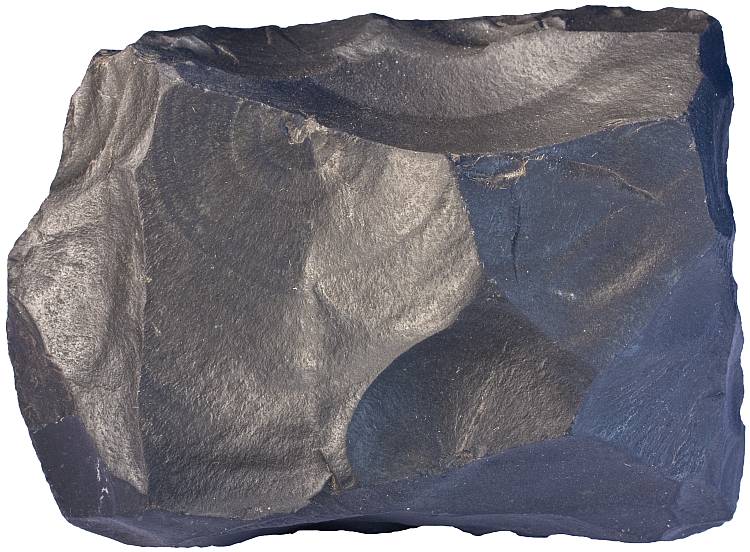Conchoidal fracture is a smoothly curving fracture surface of fine-grained materials which have no planar surfaces of internal weakness or planes of separation (no cleavage). Such a curving fracture surface is characteristic of glass and other brittle materials with no crystal structure. However, conchoidal fracture is common in crystalline materials also if they have no cleavage (like mineral quartz), or if they are composed of very small mineral grains so that the fracture surface which is actually zigzagging between the grains appears smooth to our eyes. This is the case with many fine-grained (aphanitic) rocks.

Obsidian is famous for its conchoidal fracture surface. This rock type was highly valued during the Stone Age because it makes a fine cutting blade if treated (fractured by precise and forceful blows) correctly. Width of sample is 11 cm.
Smoothly curving fracture surface develops when force is rapidly applied to brittle objects like hitting a piece of obsidian (volcanic glass) with a hard pointy object. If the force is applied correctly, a flake of obsidian is peeled away leaving obsidian with a smoothly curving fracture surface and sharp edges. It was the way our ancestors made sharp cutting tools.
Why is the fracture surface smoothly curving? Because we apply a force to only one point. This is where the brittle deformation starts. The energy of the blow spreads in the material like seismic waves travels through the Earth. So the curving lines are like the fronts of seismic energy recorded on the fracture surface. The fracture can occur only if the blow is energetic enough to peel off a flake. We need to apply more force if we want to shatter a large piece of material and much less if we just want to peel off a small flake from the edge.

Another piece of obsidian with nicely curving conchoidal fracture surfaces. Width of sample from Armenia is 11 cm.

This rock sample looks very much like obsidian but it is actually an amorphous fine-grained asphalt known as gilsonite. It has no crystalline structure and it is brittle at room temperature when force is applied rapidly. The sample from Mexico is 11 cm in width.

Even crystalline rocks like basalt may display conchoidal fracture if they are fine-grained enough. However, the fracture surface is not as smooth and shiny because microscopically it is pretty rough. Width of the sample is 12 cm.

Chert is another rock type that commonly exhibits a conchoidal fracture. It was also widely used as a tool-making material by our ancestors. Width of sample from Cyprus 7 cm.

Quartz is a mineral with crystalline structure, but there are no planes of weakness inside the crystal. Hence, it has no preferred planar surfaces along which to break. Quartz is not the only mineral without cleavage, but it is the best known and most widespread of them. Smoky quartz on the picture. Width of sample 11 cm.

Chalcedony is a very fine-grained rock type that is compositionally close to quartz and chert. There is a red variety of chalcedony which is known as carnelian on the picture above. Red color is given by hematite impurities. The sample from Kazakhstan is 14 cm in width.

“Conchoidal fracture” is named so because the curved lines on the fracture surface resemble the rippling growth lines on the shells of clams or conchs. The sample above is sandstone with abundant phosphatic brachiopod (Lingulata) shells from the Ordovician of Estonia. Brachiopods look similar to clams. Their shells have similar growth ripples. Pay attention to the fact that conchoidal fracture only looks similar to the appearance of clam shells. Their origin is completely different. Width of sample is 12 cm.
Thanm you! Have been an amateur a haeologist for years but just recently began studying ro ks Bd minerals. Greay Ppreciated cor photos and reasons for differences. Keep up the good work.